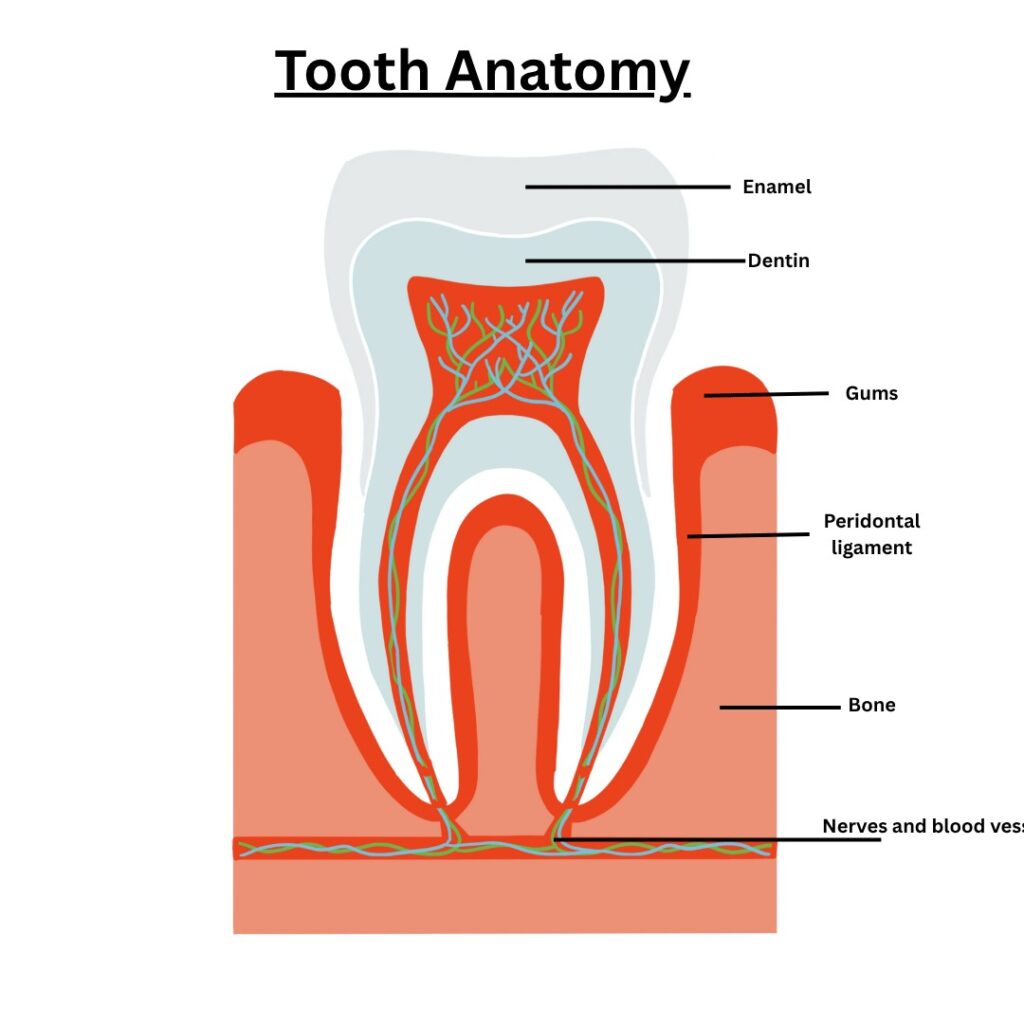Tooth pain, commonly referred to as a toothache, is among the most common dental issues that people experience. The discomfort can range from mild soreness to sharp, throbbing pain that disrupts daily life. Most people choose over-the-counter (OTC) medications for quick and efficient treatment when they have tooth pain.
The best over-the-counter medications for tooth pain are the first choice for immediate treatment, mainly because they are widely accessible at pharmacies, supermarkets, and online. For example, painkillers, topical gels, and oral rinses are common choices since they help numb the afflicted area, reduce inflammation, and offer momentary relief. Consequently, people can manage their pain until they can visit a dentist, as these toothache treatments are easy to use, convenient, and reasonably priced.
However, it’s important to keep in mind that over-the-counter toothache medication only offers short-term relief. Additionally, chewing difficulties, fever, swelling, or persistent tooth pain could all be signs of a serious dental issue that needs to be treated by a dentist. Therefore, protecting your oral health requires knowing both when to visit the dentist and when to take over-the-counter pain relievers for toothaches.

What Causes Tooth Pain and Why It Hurts
Tooth pain happens when the nerves inside a tooth or the surrounding gums become irritated. This discomfort can be mild or severe, depending on the cause.
Top Reasons Your Tooth Pain Might Be Happenin
Toothache can be caused by the following
- Cavities (tooth decay) – holes in the enamel that expose sensitive areas.
- Gum disease – inflammation or infection of the gums.
- Tooth sensitivity – pain from hot, cold, or sweet foods.
- Dental infection (abscess) – severe, throbbing pain from bacterial buildup.
- Tooth injury or crack – damage that exposes nerves.

First-Line OTC Medicines for Tooth Pain
Nonsteroidal anti-inflammatory drugs (NSAIDs), either alone or combined with acetaminophen, are among the most effective first-line treatments for dental pain.Here are the most common OTC medicines and other options, along with how they work to relieve tooth pain.
Ibuprofen for dental pain
When tooth pain strikes, one of the most effective remedies you can reach for is ibuprofen. This common over-the-counter medicine works by blocking the enzymes that cause inflammation, helping reduce both pain and swelling.
The adult dose is 200–400 mg every 6 to 8 hours as needed. Many dentists recommend it after extractions, for gum inflammation, or to ease a stubborn toothache.
For even better results, some studies suggest combining ibuprofen with acetaminophen; however, always consult with your dentist or pharmacist before doing so.
.
Diclofenac Potassium: An Effective Option for Dental Pain
This NSAID works by blocking enzymes that trigger inflammation, helping ease pain, swelling, and soreness. The usual over-the-counter adult dose is 50 mg every eight to twelve hours as needed.
Diclofenac is particularly helpful for moderate dental pain, including gum inflammation and post-extraction soreness. Clinical studies show it can be more effective than ibuprofen or paracetamol for decreasing postoperative pain linked with deep cavity preparation and tooth extraction
Diclofenac should not be taken together with other NSAIDs like ibuprofen or naproxen, as this raises the risk of stomach and heart problems. People with kidney, liver, or heart conditions should speak to a healthcare provider before use. Because of potential side effects, diclofenac is usually recommended only for short-term use.
Acetaminophen(Paracetamol) for Dental Pain
Acetaminophen is a well-known over-the-counter option for easing mild to moderate dental pain. Unlike NSAIDs, it does not reduce inflammation but instead works by blocking pain signals in the brain, making it a safe alternative for many people.
Acetaminophen is effective because it provides consistent pain relief without irritating the stomach or kidneys like NSAIDs often do. However, it’s very important not to exceed the maximum daily dose. People with liver disease or those who consume alcohol regularly should consult a healthcare professional before use.
Stronger Relief: Combining OTC Painkillers for Tooth Pain
Using an NSAID together with acetaminophen can provide stronger pain relief than either medicine on its own. This combination works in two ways: the NSAID reduces inflammation at the source, while acetaminophen blocks pain signals in the brain. According to the American Dental Association (ADA), combining the two is often more effective than opioids for dental pain.
A common example is taking ibuprofen 400 mg with acetaminophen 500 mg every six hours as needed. Research also supports this approach, showing that the ibuprofen–acetaminophen combination provides greater relief than opioids after dental surgery
Safety note
Always stay within the recommended daily limits for each medicine, and avoid combining them with other NSAIDs or additional acetaminophen products. If you have ongoing health conditions or take other medications, check with your dentist or pharmacist before use.
Keep all medicines out of reach of children. Dosages for children and older adults should be carefully adjusted — always consult a pharmacist before giving any medicine to a child or elderly person.
For more tips on using medicines safely, read our related article:https://yourhealthcarecorner.com/common-drug-safety-mistakes-put-your-healthcare-at-risk/#comments
Role of Topical Medicines in Tooth Pain
Some people turn to gels or liquids that numb the gums and tooth area for quick relief. One common option is benzocaine gel. This topical medicine works by temporarily numbing the affected area, easing discomfort until oral pain relievers start to work
Over-the-counter benzocaine products are usually available in strengths of 10–20%. They can be helpful for short-term relief of tooth or gum pain, but the effect only lasts a short while and should not be relied on as a long-term solution.
Benzocaine should not be used in children under 2 years old because of the risk of a rare but serious condition called methemoglobinemia. Adults should also use it sparingly and follow product instructions carefully to avoid side effects.
Best Over-the-Counter Medicine Plan for Tooth Pain Relief
| Step | Option | Recommendation |
| Step 1 | Temporary Management | Use a short-acting local anesthetic (e.g., lidocaine or articaine) for immediate pain relief. Plan for dental treatment. |
| Step 2 | If NSAIDs are safe to use | Use Ibuprofen or Naproxen Sodium as first-line therapy. Reduces pain and inflammation. |
| If NSAIDs are contraindicated | Use Acetaminophen alone. Safe alternative for those who cannot take NSAIDs. | |
| Step 3 | If pain persists | Combine Ibuprofen or Naproxen Sodium + Acetaminophen for stronger, longer-lasting relief. |
How Long to Use OTC Medicines
Tooth pain from procedures like extractions usually improves within 24–48 hours. For most people, OTC medicines are only needed for a few days.
If you find yourself needing pain medicine for more than 3 days, or if the pain is getting worse instead of better, it’s a red flag that you need urgent dental care.
Additional Comfort Measures
Along with OTC medicines, simple home remedies can help manage tooth pain:
- Cold compress: Apply an ice pack to the outside of your cheek for 10–15 minutes to reduce swelling.
- Rinsing with warm salt water can ease irritation and reduce bacteria in the mouth.
- Good oral hygiene: Gently brushing and flossing can prevent food particles from worsening the pain.
These measures are temporary and should not replace proper dental treatment.
When to See a Dentist
OTC medicines can buy you time, but they are not a cure. You should see a dentist if you have:
- Severe tooth pain that lasts more than 2–3 days.
- Swelling of the gums, face, or jaw.
- Fever, bad taste, or pus near the tooth (signs of infection).
- Pain that interferes with eating, sleeping, or daily life.
- If you are breastfeeding or pregnant, then consult with the Pharmacist before the use of Over the counter medicine.
Infections that spread beyond the tooth can become medical emergencies. If you have swelling that makes it hard to breathe or swallow, go to the emergency department immediately.
Key Points
- Best OTC medicines for tooth pain: Ibuprofen and naproxen (NSAIDs), alone or combined with acetaminophen.
- Why they work: They treat the inflammatory source of dental pain and provide stronger, safer relief than opioids.
- Topical options: Benzocaine gels may provide short-term numbing, but do not replace oral pain relievers.
- Use wisely: Follow recommended dosages, avoid unsafe combinations, and don’t use OTC medicines as a long-term solution.
- See a dentist: Tooth pain is almost always a sign that professional care is needed.
Conclusion
Tooth pain can be miserable, but the right OTC medicines can make it manageable until you see a dentist. Evidence shows that NSAIDs, with or without acetaminophen, are the most effective and safest first-line choices.
It’s important to remember that pain relief is only temporary. The real solution comes from treating the underlying problem, whether it’s a cavity, infection, or another dental issue. By using OTC medicines wisely and seeking timely dental care, you can ease discomfort now while protecting your long-term oral health.
Frequently Asked Questions (FAQ)
What is the best over-the-counter medicine for tooth pain?
The most effective OTC medicines for tooth pain are ibuprofen and naproxen, which reduce both pain and inflammation. If you can’t take NSAIDs, acetaminophen (paracetamol) is a safe alternative.
Can I take ibuprofen and acetaminophen together for tooth pain?
Yes. Research shows that combining ibuprofen and acetaminophen provides stronger pain relief than either medicine alone. However, always follow recommended doses and ask a pharmacist or dentist before combining them.
How long can I use over-the-counter pain relievers for tooth pain?
OTC pain medicines should be used for no more than 3 days unless directed by a healthcare provider. Persistent or worsening pain may indicate a dental infection or cavity that requires professional care.
Are topical gels like benzocaine safe for tooth pain?
Benzocaine gels can provide temporary numbing relief, but their effect is short-lived. Adults can use them sparingly, but children under 2 years should avoid them due to possible serious side effects.
When should I see a dentist for a toothache?
You should see a dentist if your pain lasts more than 2–3 days, is accompanied by swelling, fever, or pus, or interferes with eating or sleeping. These signs could indicate an infection that needs prompt dental treatment.
How can I prevent future tooth pain?
Maintain good oral hygiene, brush twice a day with fluoride toothpaste, floss daily, and visit your dentist regularly. Avoid excessive sugar and treat dental problems early to prevent toothache.
References
Cleveland Clinic. (n.d.). Toothache. Retrieved October 2, 2025, from https://my.clevelandclinic.org/health/diseases/10957-toothache
Drugs.com. (2025, April 25). Diclofenac dosage guide + max dose, adjustments. https://www.drugs.com/dosage/diclofenac.html
Gazal, G., & Al-Samadani, K. H. (2017). Comparison of paracetamol, ibuprofen, and diclofenac potassium for pain relief following dental extractions and deep cavity preparations. Saudi Medical Journal, 38(3), 284–291. https://doi.org/10.15537/smj.2017.3.16023
Green, V. G., Polk, D. E., Turturro, M. A., Moore, P. A., & Carrasco-Labra, A. (2025). Evidence-based clinical practice guidelines for the management of acute dental pain. The American Journal of Emergency Medicine, 89, 247–253. https://doi.org/10.1016/j.ajem.2024.12.045
Kiersch, T. A., Halladay, S. C., & Koschik, M. (1993). A double-blind, randomized study of naproxen sodium, ibuprofen, and placebo in postoperative dental pain. Clinical Therapeutics, 15(5), 845–854. https://pubmed.ncbi.nlm.nih.gov/8269470
NHS. (2025, June). Toothache. Retrieved October 2, 2025, from https://www.nhs.uk/conditions/toothache/
Pozzi, A., & Gallelli, L. (2012). Pain management for dentists: The role of ibuprofen. Annali di Stomatologia (Roma), 2(3–4 Suppl), 3–24. https://pmc.ncbi.nlm.nih.gov/articles/PMC3414241
